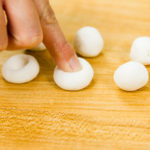
Shiratama Dango
If you enjoy wagashi (Japanese confectionery) and wish to make them at home, this post shows you how to make Shiratama Dango that are found in many Japanese sweets. Chewy & gooey in texture, this type of mochi uses glutinous rice flour made from shiratamako or mochiko.
Servings: 16 Shiratama Dango
Calories: 13kcal
Ingredients
For Dango with Mochiko
- ⅓ cup mochiko (glutinous rice flour/sweet rice flour)
- 2½ Tbsp water
- ½ tsp sugar
For Dango with Shiratamako (I prefer this over mochiko)
- ⅓ cup shiratamako (glutinous rice flour/sweet rice flour)
- 3 Tbsp water
- ½ tsp sugar
Instructions
- Gather all the ingredients.
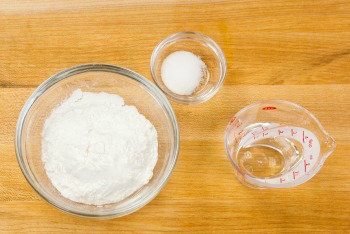
- Combine ⅓ cup mochiko (glutinous rice flour/sweet rice flour), ½ tsp sugar, and 2½ Tbsp water in a large bowl. (If using shiratamako, combine ⅓ cup shiratamako (glutinous rice flour/sweet rice flour), ½ tsp sugar, and 3 Tbsp water.) Mix with a rubber spatula until well combined.
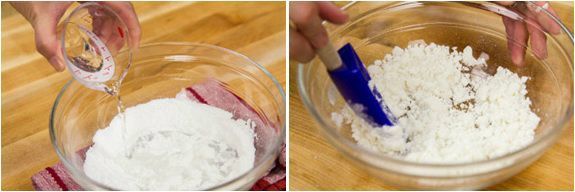
- Use the mochiko ball to pick up crumbs in the bowl like this. We say the texture of the dough should be like an “earlobe.”
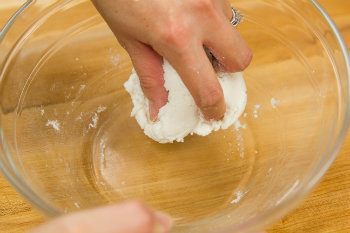
- Then, roll into a nice smooth ball and then form into a log.
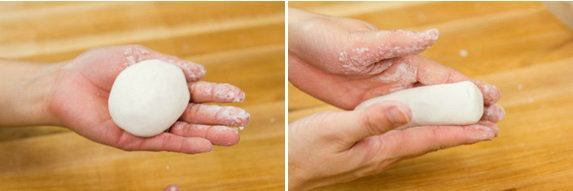
- Pinch off dough from the log and roll each one into a ¾-inch (2-cm) ball and then flatten it into a thick disc, about a scant ½ inch (1.3 cm) thick. You should be able to make about 16 balls.

- Use your index finger to make an indentation in the center (this will help cook faster and less doughy in texture after cooking).

- Add the Shiratama Dango to boiling water. Once they float to the surface, cook for 1 minute.
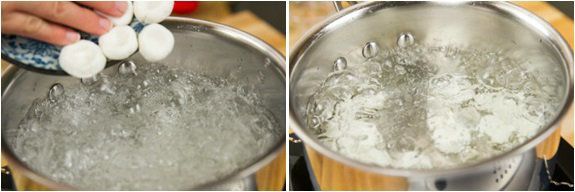
- Remove from the water and soak in ice water to let them cool.

To Serve
- Serve the Shiratama Dango in your dessert.
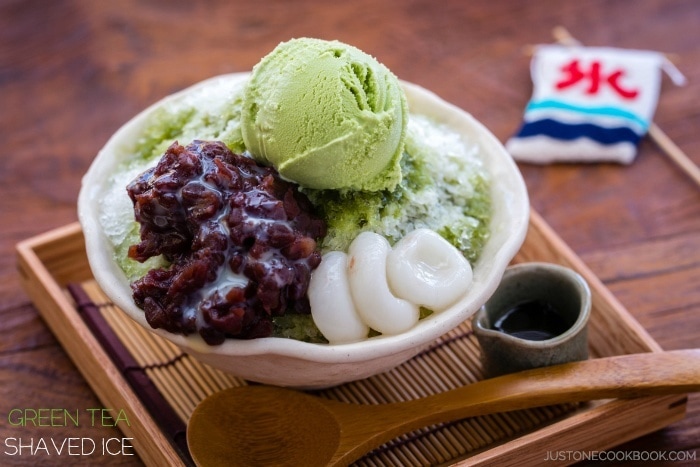
To Store
- Shiratama Dango are soft and chewy within 30 minutes after they are made. If you are not using them right away, keep them in water and store in the refrigerator. Shiratama Dango will become hard, so you need to reheat them in boiling water to soften them before serving.
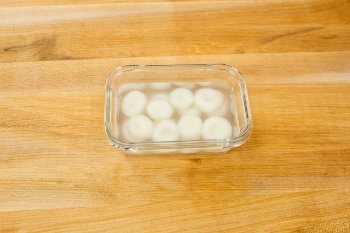
Notes
If you can find both mochiko and shiratamako, I recommend using shiratamako because mochi made with shiratamako has a very smooth, more refined, and elastic bouncy texture. And it also tastes better in my opinion. Also, shiratamako is much easier to use compared to mochiko. You can read a little bit more details on these glutinous rice flour on shiratamako page.
Nutrition
Calories: 13 kcal · Carbohydrates: 3 g · Protein: 1 g · Fat: 1 g · Saturated Fat: 1 g · Polyunsaturated Fat: 1 g · Monounsaturated Fat: 1 g · Sodium: 1 mg · Potassium: 3 mg · Fiber: 1 g · Sugar: 1 g · Calcium: 1 mg · Iron: 1 mg